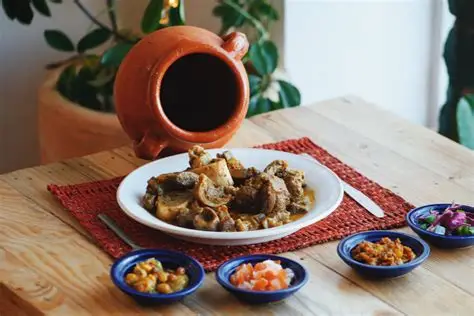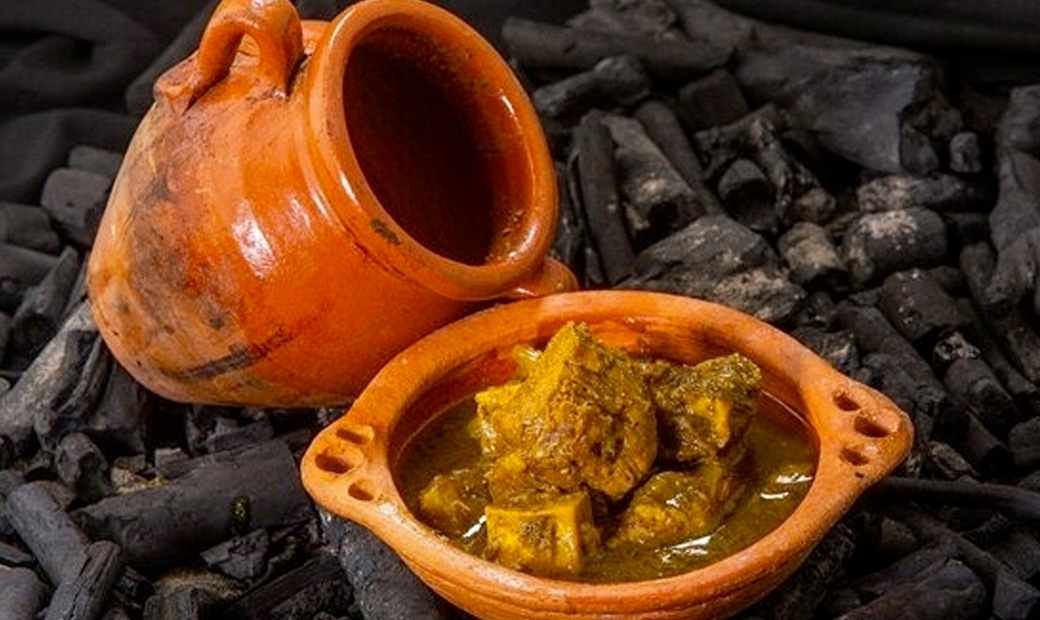Introduction: Discovering Morocco’s Legendary Dish
Tangia Marrakchia is more than just a meal; it is a culinary symbol of Marrakech. Named after the traditional clay pot in which it is slow-cooked, Tangia Marrakchia captures the essence of Moroccan flavors with tender meat, aromatic spices, and a rich, comforting sauce. For locals and travelers alike, it represents authenticity, tradition, and the heart of Marrakchi cuisine.
This dish is traditionally prepared by men in Marrakech, particularly in the old medina, where it’s cooked slowly in communal ovens or private homes, giving it a unique taste that is hard to replicate elsewhere. Eating Tangia Marrakchia is not just about food—it’s an experience that connects you with Moroccan culture, history, and hospitality.

Why Tangia Marrakchia is a Must-Try
Tourists often ask: why is Tangia Marrakchia so special among Moroccan dishes? The answer lies in its simplicity, depth of flavor, and the cultural story behind it.
Unlike tagines or couscous, which are found throughout Morocco, Tangia is strictly Marrakchi. The slow-cooked method allows the spices—typically saffron, preserved lemons, cumin, garlic, and olive oil—to infuse deeply into the meat. The result is a tender, aromatic dish with layers of flavor that reflect the city’s culinary heritage.
Moreover, Tangia Marrakchia is usually served with bread, allowing you to savor every drop of its rich sauce. It’s perfect for a family meal, a casual lunch, or a festive occasion.
For more Moroccan recipes, check our Moroccan Cuisine Recipes page.

How Tangia Marrakchia is Made
The magic of Tangia lies in its cooking method. Traditionally:
-
Meat Selection: Beef, lamb, or sometimes veal.
-
Spices & Aromatics: Garlic, saffron, cumin, olive oil, and preserved lemon.
-
Cooking Method: All ingredients are placed in a tall, urn-shaped clay pot called “Tangia.” The pot is sealed and slowly cooked for several hours, often in communal hammam ovens or home hearths.
The slow cooking gives the meat a melt-in-your-mouth texture and a deeply infused flavor. Unlike fast meals, Tangia Marrakchia is about patience, tradition, and savoring every bite.
Where to Taste the Best Tangia Marrakchia
Marrakech’s medina is full of hidden gems serving authentic Tangia:
-
Traditional Restaurants: Many family-run spots in the medina specialize in Tangia, often cooked in wood-fired ovens.
-
Street Vendors: Some local vendors prepare smaller portions, perfect for a quick taste.
-
Private Experiences: For travelers wanting the full experience, some local chefs offer private Tangia cooking sessions, teaching you the art of this legendary dish.
For more details on Moroccan cuisine and its history, visit Wikipedia – Moroccan Cuisine.
Tips for Enjoying Tangia Marrakchia
-
Timing: Tangia is best enjoyed freshly cooked; mornings are ideal for restaurants that slow-cook it overnight.
-
Pairings: Serve with fresh Moroccan bread and a cup of mint tea to complete the experience.
-
Portion: It’s hearty, so sharing is recommended, especially if tasting multiple Moroccan dishes.
Conclusion: A Taste of Marrakech You Cannot Miss
Tangia Marrakchia is not just food—it’s a tradition, a story, and a taste of Marrakech itself. From its aromatic spices to its tender meat and communal cooking style, it embodies the city’s heritage and warmth.
For travelers in Marrakech, trying Tangia is a culinary adventure that offers authenticity, flavor, and a connection to Moroccan culture. Whether you’re on a casual stroll through the medina or enjoying a private cooking experience, this iconic dish is a must-add to your Moroccan journey.

